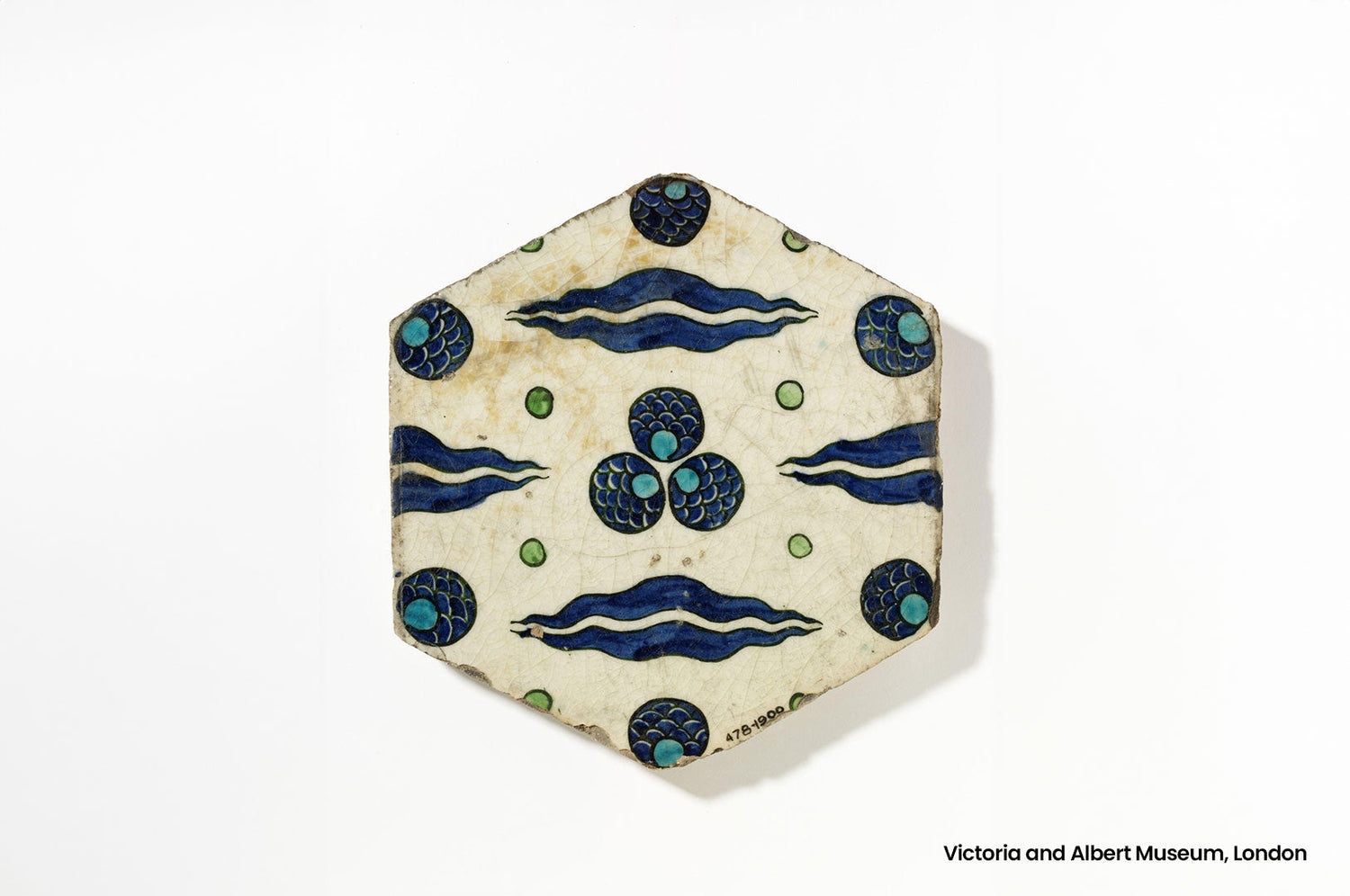The Çintemani pattern, frequently encountered in Ottoman artwork from the 15th century onward, is recognizable by its motif of three dots arranged in a triangular arrangement. This design was given the name "Çintemani" in the early 20th century. In Sanskrit, Çintemani refers to a pearl-like gemstone believed to grant its possessor the power to fulfill all desires. It is also associated with a flaming gemstone called "körkle muncuk" in Uyghur art, which carries a similar meaning. However, its use in Ottoman art draws on the artistic influences of Iran under Seljuk and Mongol rule rather than Buddhist iconography.
Cultural and Historical Meaning of Cintemani
The fact that epic heroes wore tiger skins, that rulers sat on them, and that Alps who excelled in war and hunting had tiger or leopard skins under their saddles demonstrate that wearing or using fur was a symbol of sovereignty, power, and bravery. Ferdowsi's Shahnameh tells stories of tiger and leopard skins being used as armor. In the Ottoman army, soldiers wore metal armor, while the madmen wrapped themselves in furs and wrapped their horses' heads in furs.
The Cintemani Motif in Artistic Contexts
Spots and wavy lines inspired by animal hides are among the motifs particularly popular in fabrics and carpets. Carpets recorded in the price registers as "peleng embroidered prayer rugs" were inspired by the sultan praying while wearing a tiger skin and sending the skin as a gift to the vizier. Fabric names such as "Bursa spot" and "Şahi spot" exemplify the different meanings attributed to these traditional motifs in Ottoman art than those derived from Buddhist iconography.
The Influence and Reflections of Çintemani
During the Seljuk period, the three-dot motif was used as a fabric pattern, particularly on tiles and ceramics made with luster technique. As seen on a Seljuk tile in luster technique exhibited in the Sadberk Hanım Museum, a person wearing a caftan with a three-dot motif and sash-shaped sleeves was either a ruler or a nobleman. The depictions in the Hünername, written by the palace scribe Seyyid Lokman and whose miniatures were created by Nakkaş Osman and his team, demonstrate that in Ottoman miniatures, the use of dot and pelengi motifs in the fabrics of caftans, the cushions on the throne where the sultan sat, and the saddle cloths of horses, preserved ancient traditions. The saying in the Hünername, "He who shoots a tiger with an arrow makes a cone or caftan from its hide," suggests the tiger-striped caftans in the portraits of Sultan Selim II and Barbaros Hayreddin Pasha, painted by Nakkaş Nigari.
Traces of the Cintemani Motif in the Modern Age
The spots on the leopard's hide and the wavy lines on the tiger's hide evolved into abstract patterns over time and were often used together as a single motif. When used alone, a compositional scheme of infinite repeats on shifted axes was preferred. When used together, the spots were placed in a staggered pattern at the center of triangles between two opposing wavy folds. The frequent use of the chintamani motif by palace muralists has been interpreted by some researchers as a type of dynastic coat of arms, and this motif was not exclusive to sultans and high-ranking officials. Various applications of the motif were encountered from the second half of the 15th century to the end of the 17th century on silk textiles, embroidered bundles and quilt covers on silk or linen fabrics, carpets, wall tiles, ceramics, stone and metalwork, military equipment, and wooden artifacts inlaid with mother-of-pearl and tortoiseshell, such as the thrones and cabinet doors at Topkapı Palace. The presence of crescent-shaped ornaments within the dots, and the resemblance of wavy lines to lightning or clouds, have led to associations with the Nevruz star and cosmic symbols. The motif, which also found its way into the fabrics woven in accordance with the taste of the period, was also repeated in Italian textiles inspired by Ottoman fabrics. However, by the 18th century, when the influence of Western art began to be seen, the cintemani had been forgotten.
The Çintemani pattern, one of the most striking and meaningful motifs in Ottoman art, has been used in various forms throughout history. Beyond being merely an aesthetic ornament, this pattern has become a social and cultural symbol, symbolizing concepts such as power and protection. Appearing in a wide range of applications, from silk textiles to ceramics, Çintemani has served as a tool for artistic expression, reflecting the social structure and belief systems of the period. Today, this impressive motif continues to find a place both as a historical legacy and in modern designs. The rich history and universal appeal of Çintemani form an artistic bridge stretching from the Ottoman period to the present day. Discover our Çintemani motif products at İznik Blue Tile to bring this unique work of art into your living spaces.




